Die Forschung in unserem Labor konzentriert sich auf die folgenden Hauptthemen:
Welche Auswirkungen hat auditorische Deprivation (Taubheit) während der postnatalen Entwicklung auf die funktionellen und strukturellen Eigenschaften der neuronalen Netzwerke im auditorischen System?
Optimierung der intracochleären elektrischen Stimulation zur Wiederherstellung des Gehörs mit Hilfe eines Cochlea-Implantats bei gehörlosen Personen.
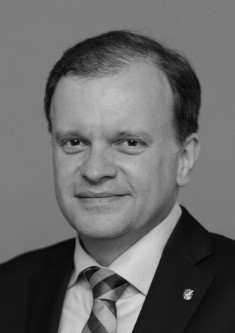



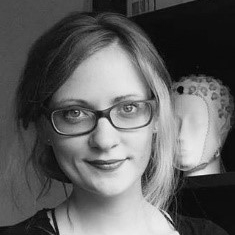


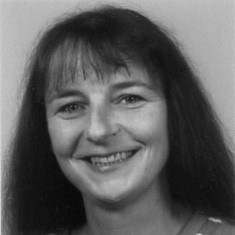



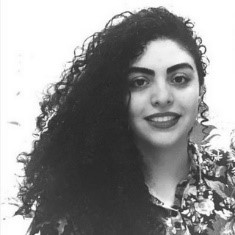
Wir untersuchen die strukturelle und funktionelle Plastizität und die Anpassung des auditorischen Systems nach auditorischer Deprivation und/oder intracochleärer elektrischer Stimulation. Nachstehend finden Sie eine Liste unserer wichtigsten wissenschaftlichen Beiträge zu diesem Forschungsthema:
Auditive Kortikale Verarbeitung und Konnektivität bei bilateraler und unilateraler angeborener Taubheit:
6. Tillein J*, Hubka P*, Syed E, Hartmann R, Engel A, Kral A (2010): Cortical representation of interaural time differences in congenital deafness. Cereb Cortex 20: 492-506.
7. Kral A, Tillein J, Hubka P, Schiemann D, Heid S, Hartmann R, Engel AK (2009): Spatiotemporal patterns of cortical activity with bilateral cochlear implants in congenital deafness. J Neurosci 29(3): 811-827.
8. Kral A, Tillein J, Heid S, Hartmann R, Klinke R (2005): Postnatal cortical development in congenital auditory deprivation. Cereb Cortex 15: 552-562.
9. Kral A, Hartmann R, Tillein J, Heid S, Klinke R (2002): Hearing after congenital deafness: central auditory plasticity and sensory deprivation. Cereb Cortex 12: 797-807.
10. Kral A, Hartmann R, Tillein J, Heid S, Klinke R (2000): Congenital auditory deprivation reduces synaptic activity within the auditory cortex in a layer-specific manner. Cereb Cortex 10: 714-726.
11. Klinke R, Kral A, Heid S, Tillein J, Hartmann R (1999): Recruitment of the auditory cortex in congenitally deaf cats by long-term cochlear electrostimulation. Science 285:1729-1733.
Cross-Modale Kortikale Reorganisation bei angeborener Taubheit:
1. Land R, Radecke J-O, Kral A (2018): Congenital deafness reduces, but does not eliminate auditory responsiveness in cat exstrastriate visual cortex. Neurosci 375: 149-157.
2. Land R, Baumhoff P, Tillein J, Lomber SG, Hubka P, Kral A (2016): Cross-modal plasticity in higher-order auditory cortex does not limit auditory responsiveness to cochlear implants. J Neurosci 36(23):6175-6185.
3. Lomber SG, Meredith A, Kral A (2010): Crossmodal plasticity in specific auditory cortices underlies visual compensations in the deaf. Nat Neurosci 13(11): 1421-1427.
Cochlear und Cochleare Gesundheit:
1. Schurzig D, Pietsch M, Erfurt P, Timm ME, Lenarz T, Kral A (2021): A cochlear scaling model for accurate anatomy evaluation and frequency allocation in cochlear implantation. Hear Res 403:108166.
2. Konerding W, Arenberg J, Kral A, Baumhoff P (2020): Late electrically-evoked compound action potentials as markers for acute micro-lesions of spiral ganglion neurons. Hear Res 18:108057.
3. Pietsch M, Aguirre Davila L, Erfurt P, Avci E, Lenarz T, Kral A (2017): Spiral form of the human cochlea results from spatial constraints. Sci Rep 7:7500.
4. Konerding WS, Janssen H, Hubka P, Tornoe J, Mistrik P, Wahlberg L, Lenarz T, Kral A, Scheper V (2017): Encapsulated cell device approach for combined electrical stimulation and neurotrophic treatment of the deaf cochlea. Hear Res 350:110-121.
5. Helmstaedter V, Lenarz T, Erfurt P, Kral A, Baumhoff P (2017): The summating potential is a reliable marker of electrode position in electrocochleography: cochlear implant as a theragnostic probe. Ear Hear 39(4): 687-700.
6. Avci E, Nauwealers T, Hamacher V, Kral A (2017): Three-dimensional force profile during cochlear implantation depends on individual geometry and insertion trauma. Ear Hear 38(3): 168-179.
7. Avci E, Nauwealers T, Lenarz T, Hamacher V, Kral A (2014): Variations in Microanatomy of the Human Cochlea. J Comp Neurol 522: 3245-3261.
Optoakustische Cochlearstimulation im nahen Infrarotbereich:
1. Baumhoff P, Kallweit N, Kral A (2019): Intracochlear near infrared stimulation: Feasibility of optoacoustic stimulation in vivo. Hear Res 371: 40-52.
2. Kallweit N, Baumhoff P, Krueger A, Tinne N, Kral A, Ripken T, Maier H (2016): Optoacoustic effect is responsible for laser-induced cochlear responses. Sci Rep 6:28141.
3. Schultz M, Baumhoff P, Kallweit N, Sato M, Krüger A, Ripken T, Lenarz T, Kral A (2014): Optical stimulation of the hearing and deaf cochlea under thermal and stress confinement condition. Proc SPIE 8928: 892816 1-7.
4. Kallweit N, Maier H, Schultz M, Tinne N, Krüger A, Kral A, Ripken T (2014): Investigation of laser-tissue interaction for optical cochlea stimulation. Biomed Eng 59: 735.
5. Schultz M, Baumhoff P, Maier H, Teudt IU, Krüger A, Lenarz T, Kral A (2012): Nanosecond laser pulse stimulation of the cochlea - a wavelength study. Biomedical Optics Express 3(12): 3332-3345.
6. Teudt IU, Maier H, Richter CP, Kral A (2011): Acoustic events and optophonic cochlear responses to near infrared laser stimulation. IEEE Trans Biomed Eng 58(6): 1648-1655.
ELECTROACOUSTIC INTERACTION IN COCHLEAR IMPLANTS
1. Sato M, Kral A (2020): Dynamic range of cochlear implant stimulation is larger in residually hearing cochlea. Acoust Sci Tech 41(1): 380-381.
2. Sato M, Baumhoff P, Tillein J, Kral A (2017): Physiological mechanisms in combined electric-acoustic stimulation. Otol Neurotol 38, e215-223.
3. Sato M, Baumhoff P, Kral A (2016): Cochlear implant stimulation of a hearing ear generates separate electroneural and electrophonic responses. J Neurosci 36(1): 54-64.
EEG bei Cochlear-Implantatanwendern:
1. Schierholz I, Schönemark C, Ruigendijk E, Kral A, Kopp B, Büchner A (2021): An event-related potential study of auditory attention in cochlear implant users. Clin Neurophys S1388-2457(21)00570-8.
2. Schierholz I, Finke M, Kral A, Büchner A, Rach S, Lenarz T, Dengler R, Sandmann P (2017): Auditory and audio-visual processing in patients with cochlear, auditory brainstem and auditory midbrain implants: an EEG study. Human Brain Mapp 38: 2206-2225.
3. Finke M, Sandmann S, Bönitz H, Kral A, Büchner A (2016): Consequences of stimulus type on higher-order processing in single-sided deaf cochlear implant users. Audiol Neurotol 21:305-315.
4. Senkowski D*, Pomper U*, Fitzner I, Engel AK, Kral A (2014): Beta-band activity in auditory pathways reflects speech localization and recognition in bilateral cochlear implant users. Human Brain Mapp 35:3107-3121.
Review Papers
1. Gordon K, Kral A (2019): Animal and human studies on developmental monaural hearing loss. Hear Res 380:60-74.
2. Kral A, Dorman MF, Wilson BS (2019): Neural Development of Hearing and Language: Cochlear Implants and Critical Periods. Ann Rev Neurosci 42:47-65.
3. Kral A, Kronenberger WG, Pisoi DB, O`Donoghue GM (2016): Neurocognitive factors in sensory restoration of early deafness: a connectome model. Lancet Neurol 15(6): 610-621.
4. Kral A, Lomber SG (2015): Deaf white cats. Curr Biol 25: 351-353.
5. Gordon K, Henkin Y, Kral A (2015): Asymmetric hearing during development: The aural preference syndrome and treatment options. Pediatrics 136(1): 141-153.
6. Kral A (2013): Auditory critical periods: a review from system‘s perspective. Neuroscience 247: 117-133.
7. Kral A, Sharma A (2012): Developmental Neuroplasticity after Cochlear Implantation. Trends Neurosci 35(2): 111-122.
8. Kral A, O‘Donoghue GM (2010): Profound Deafness in Childhood. New England J Med 363:1438-50.
9. Kral A, Eggermont JJ (2007): What’s to lose and what’s to learn: Development under auditory deprivation, cochlear implants and limits of cortical plasticity. Brain Res Rev 56(1):259-69.
10. Kral A, Tillein J, Heid S, Klinke R, Hartmann R (2006): Cochlear implants: Cortical plasticity in congenital deprivation. Prog Brain Res 157: 283-314
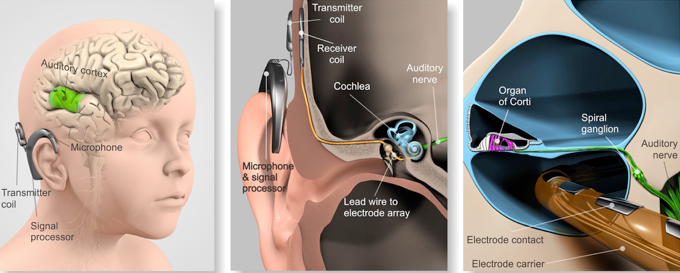
Prof. Dr. Andrej Kral
+49 511 7272
kral.andrej(at)mh-hannover.de
NIFE
Stadtfelddamm 34
30625 Hannover
Laborwebseite:
Bücher
A. Kral, F. Aplin, H. Maier. Prostheses for the brain: Introduction to Neuroprosthetics. ISBN: 9780128188927.